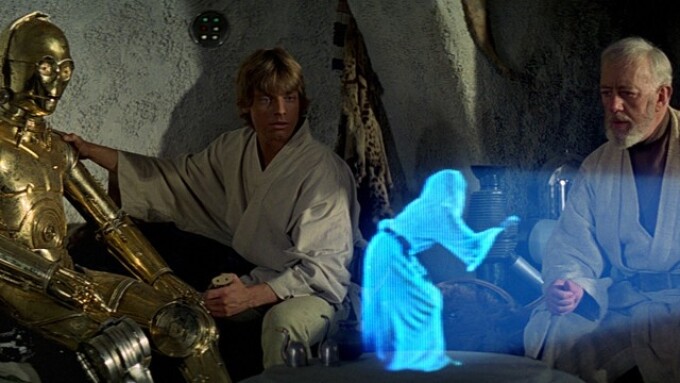LOS ANGELES — A growing collection of YouTube videos is illustrating the ease with which smartphones can be used to display 3D “holograms,” driving a consumer craze that is sure to attract adult marketers.
One popular video demonstrates how to make a viewing pyramid using a clear plastic CD case, a razor blade or X-Acto knife, a sheet of graph paper, plus some tape and a pen or pencil. A trapezoid is drawn out on the graph paper, and then used as a template for cutting out four identical pieces of the CD case, which are then assembled together with the tape to create a crude but effective viewer that is placed on the smartphone screen.
A search through YouTube reveals a fast growing number of videos compatible with these homemade holographic viewers — ranging from butterflies and jellyfish, to a dancing bottle of Heineken Light in a slickly produced marketing piece.
Although not technically holograms in the strictest sense, since lasers are not used in the production or display of these images, the holographic-like effect of these smartphone/pyramid images is remarkable — and akin to a floating 3D version of a teleprompter display — much like the classic scene portrayed in “Star Wars,” where a hologram of Princess Leia pleads “Help me, Obi-Wan Kenobi...”
Given the simple nature of this technology, one has to imagine that a better version would not be difficult to commercially develop — and perhaps scaled to near human life-size, using a floor mounted projector and a silken span in lieu of heavy plastic.
The potential for expanding the Virtual Girl concept, whether as a full-size walk-around product, or on a smaller desktop scale, by using such a viewer is intriguing (Totem, are you listening?), as is the potential for traditional adult content producers to embrace this new market opportunity.







